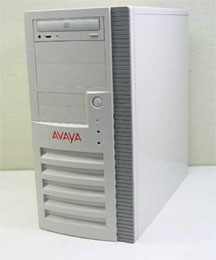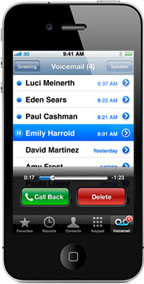|  | 
| The function of voicemail |
| Voicemail is the probably the
most important and familiar service added to telephony systems in the last
fifty years. Given the choice between call forwarding, caller ID, call
waiting, paging services, remote telecommuting, and voicemail, the majority
of users would choose voicemail. Caller ID would likely finish a close
second. Without the invention of voicemail technology, we would be relegated
to live answer, human answering services, and feature-poor answering
machines. |
| |
Voicemail
services on today's PBXs are typically external computers or proprietary
modules with the following components
- A processor to run the software that
controls the entire voicemail system
- A hard disk drive to save recorded
messages, greetings, and system files
- A telephone interface that
communicates with the phone system to answer calls, forward calls,
accept touch-tone selections, and playback messages and greetings
When a call connects to an extension and
the party is not there, the voicemail system answers the call, plays
your greeting, and records the voice message. It sounds simple, but the
research, development, and perfection of this task occurred over
decades.
|
 |
|
Intuity Audix
voicemail PC with Pentium processor. |
|
|
| |
|
Voicemail Features |
 |
|
iPhone with Visual
Voicemail |
|
Typical
voicemail systems have a common feature set. These include call answer,
greeting recording and playback, message playback, message forward, and
save and delete. Users access their messages by logging into their
mailbox directly over their phone. Messages retrieved in this manner can
only be played back or skipped in the order that they were received. In
addition playback is usually accompanied by a time and date, caller ID,
and message length. Newer voicemail
systems have incorporated features that integrate with other forms of
communication. These include forwarding to email, remote notification
and message retrieval, and visual voicemail. Visual voicemail
allows users to see all of their messages on a deskphone display, cell
phone display, or PC. The messages are accompanied by time and date,
message length and contact identification. Using this information, the
user can select which message to playback and playback can occur in any
order. In the age of iPhones, this feature is common place and often an
expected service for any smart phone user. |
|
|
|
| Automated attendant service |
| Almost all voicemail systems
also provide integrated automated attendants. An automated attendant is the
familiar service that announces, “Thank you for calling XYZ company. If you
know your party’s extension, please dial it now. Otherwise please choose from these
options….” Auto-attendants use the same technology that voicemail services
do. They answer calls and play back greetings, provide menu options, and
accept touch tone selections. They also connect calls to the correct party. |
| |
| Certainly, voicemail systems
play a very important role in today’s PBX market. It is a service that is
expected on any business phone system, cell phone service, or residential
line. |
|
|